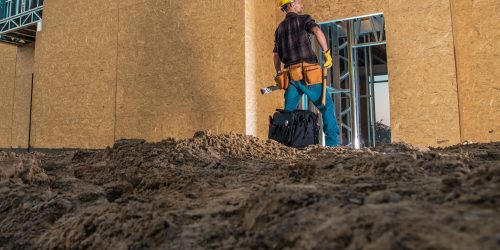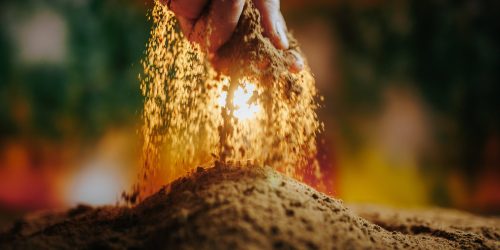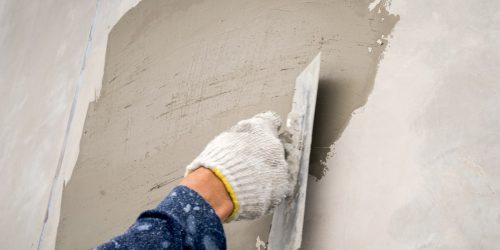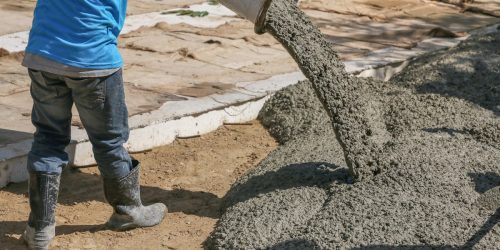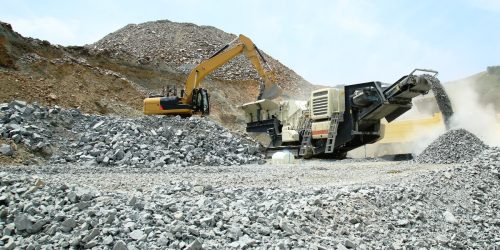
Concrete is an essential building material. It has been around for over 3,000 years and is used in almost every aspect of construction. Because it’s such a versatile material, there are many ways to mix concrete and combine ingredients to create the best mix possible. In this article, we’ll explain how concrete is made in various forms.
What is concrete?
Concrete is a composite material. It is made from cement, water, and aggregate (such as sand or gravel). The concrete hardens through a chemical process called hydration. This happens when water reacts with calcium silicates in the cement to form new compounds that bind together all of the other ingredients in the mix.
The resulting product is strong and durable, making it ideal for construction purposes such as roads, bridges, and buildings – just some examples of how we use concrete daily!
Concrete Mix
Concrete is a composite material made from a mixture of cement, sand, and gravel. It’s one of the most widely used construction materials in the world because it’s durable and cost-effective (and you can build just about anything with it).
Concrete consists of two major components: aggregate–the coarse material that gives concrete its strength–and binder, which holds everything together. Aggregate comes from crushed stone or rock; it can be natural or manufactured (such as gravel).
Cement acts as a glue to bind all these ingredients together into one solid mass while preventing cracks from forming during hardening processes like freezing/thawing cycles found near bodies of water where frost heave often occurs during winter months due to extreme temperatures swings between night/day temperatures experienced by coastal areas located near oceans where sea levels rise due to global warming caused by human activities such as fossil fuel burning which releases greenhouse gases into the atmosphere.
Aggregate
Aggregate is the most critical part of any concrete mix. It’s what you see and feel in your finished product, making up the bulk of your concrete. Aggregate particles are larger than sand but smaller than rock. Concrete mixes use a variety of aggregates with different properties to achieve different results:
- Gravels: These are rounded rocks that range in size from pea gravel to cobbles (large stones). They’re used for structural applications or ground covering.
- Cobbles: These are similar to gravels, but they have jagged edges instead of smooth ones because they’ve been broken apart by water running over them at some point during their formation process or history as sedimentary deposits on land masses like continents or islands where rivers meet oceans–you get the idea!
Admixtures
Admixtures are additives that are added to concrete to improve its properties. There are many different types of admixtures, and they can be used for various purposes, such as accelerating the setting time or increasing durability.
Some common admixtures include accelerators, air-entraining agents, anti-shrinkage agents, calcium chloride (a water reducer), cementing agents, and fluid loss control additives.
Cement Types and Properties
Concrete is a mixture of sand, gravel, and water. The cementing material binds the aggregate together and gives it strength. There are two main types of cement: Portland and hydraulic.
Hydraulic cements are used in concrete because they set more quickly than Portland cements, but they don’t bind as well to aggregates or other ingredients in your mix. This means that if you use too much of this type of cement in your mix, it will crack later on due to shrinkage or movement within the structure being built (elevator shafts can experience quite a bit of both).
Water to Cement Ratio
The water-to-cement ratio is vital in the mix. If you have too much water, it will not set. If you have too little water, it will not set. If you have the right amount of water and cement together, your concrete will set correctly!
Mixing
Mixing is essential to the process, and you must get it right. How much water do you need? Will your mixture be too wet or too dry? Only a professional can answer these questions, but some basic guidelines will help anyone mix concrete successfully at home.
Always be sure to use the right amount of water. Concrete requires a certain amount of moisture to set correctly, so make sure you add enough water while mixing it. The exact amount depends on what type of concrete you’re using as well as its density level–the percentage by volume of solid particles within the mixture.
While most standard mixes require about one-third cup per pound (0.5 liters/kilogram), try adding less if your mix looks too runny or more if your batch seems dryer than usual; then check again after another five minutes before deciding whether or not further adjustments are needed.
Choose ASR Materials for Your Concrete Needs
Concrete is an essential building material. It’s used in the construction of buildings, highways, and bridges, as well as in many other applications.
Whether you’re doing a home project or need concrete constantly for a landscaping company, ASR Materials is your go-to supplier in South Florida.
LOOKING FOR THE BEST SUPPLIER IN SOUTH FLORIDA?
YOU FOUND US, ASR MATERIALS.
